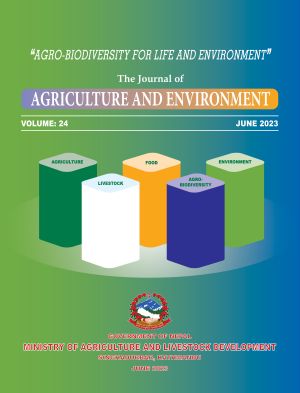Trichoderma: its Ecophysiology, Mechanism of Biocontrol and Application Methods
DOI:
https://doi.org/10.3126/aej.v24i01.58203Keywords:
Antagonism, biocontrol, biocontrol agents, competition, systemic resistanceAbstract
Chemically managed plants impose environmental risks to humans and environment. Using biological approaches to control plant diseases is a more effective and environment friendly alternative. The biological approach to plant disease refers to controlling disease by using organisms like fungi, bacteria and viruses. This can be done by introduction or utilization of resident antagonistic living organisms. Biological control can be achieved through different forms of interactions between organisms and the interactions includes hyperparasitism, antibiosis, commensalism, neutralism, and competition. Various biocontrol agents commonly used against plant pathogens are Trichoderma harzianum, Trichoderma hamatum, Trichoderma viride, Trichoderma koningii, Gliocladium virens, Gliocladium roseum, Paecilomyces liiacinus, Coniothyrum minitans, Bacillus subtilis, Bacillus polymyxa, and Pseudomonas fluorescens.




